The NHL Scouting Combine returned to Buffalo on Saturday, with all 32 teams getting a final opportunity to assess this crop of big-league hopefuls before the 2024 NHL Draft in Las Vegas.
Fitness testing is the central component of the combine, while the teams also had a chance to meet the prospects individually.
Here’s a list of all the drills each prospect participated in (with a brief explanation) and who finished in the top 10:
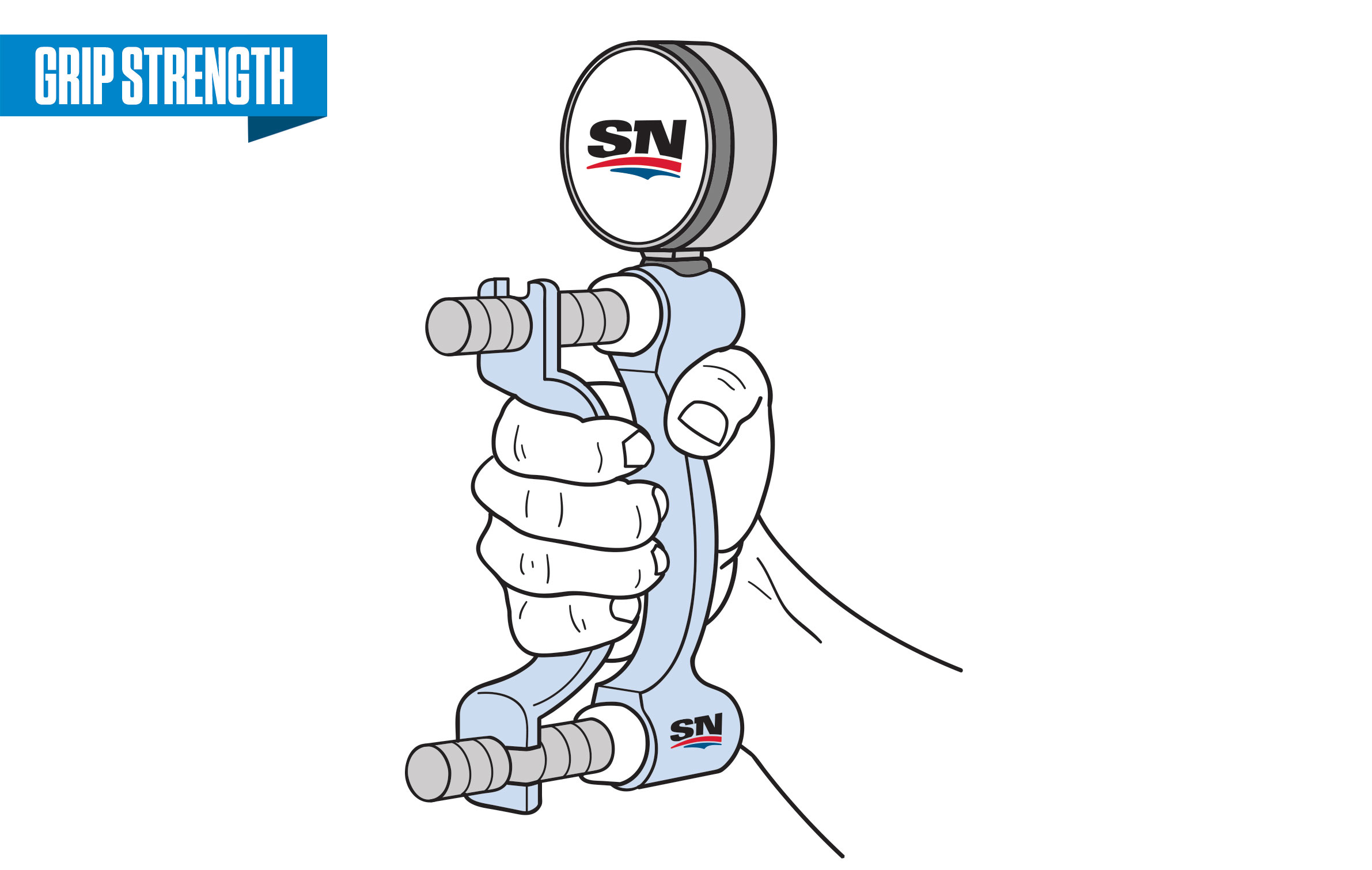
Grip Strength: The athlete adjusts a hand grip dynamometer to his hand size, fully extends his arm and squeezes the dynamometer as forcefully as possible. The test is conducted on both hands.
Left Hand Grip (lbs.)
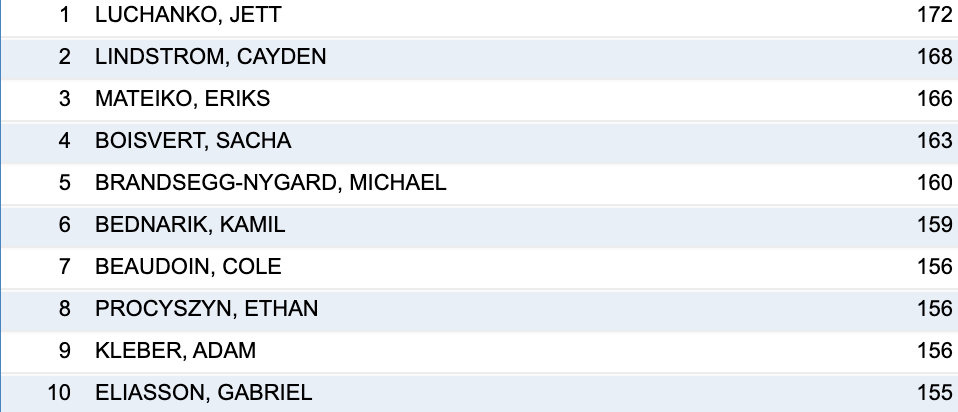
Right Hand Grip (lbs.)
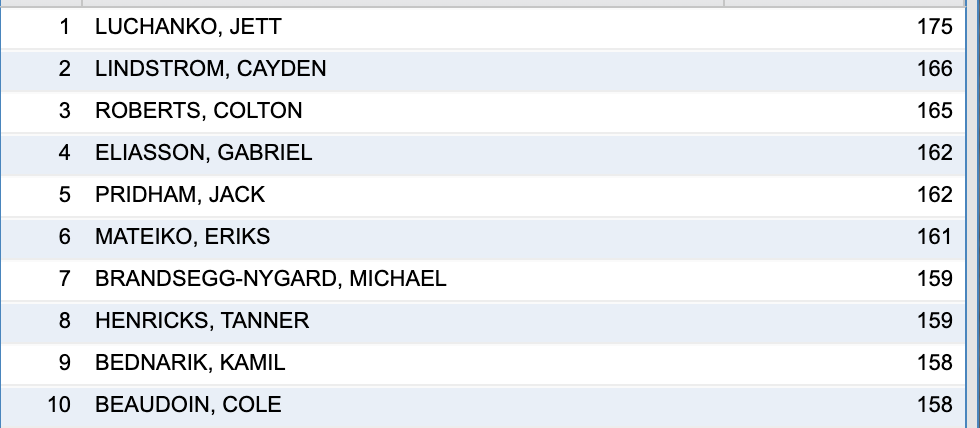
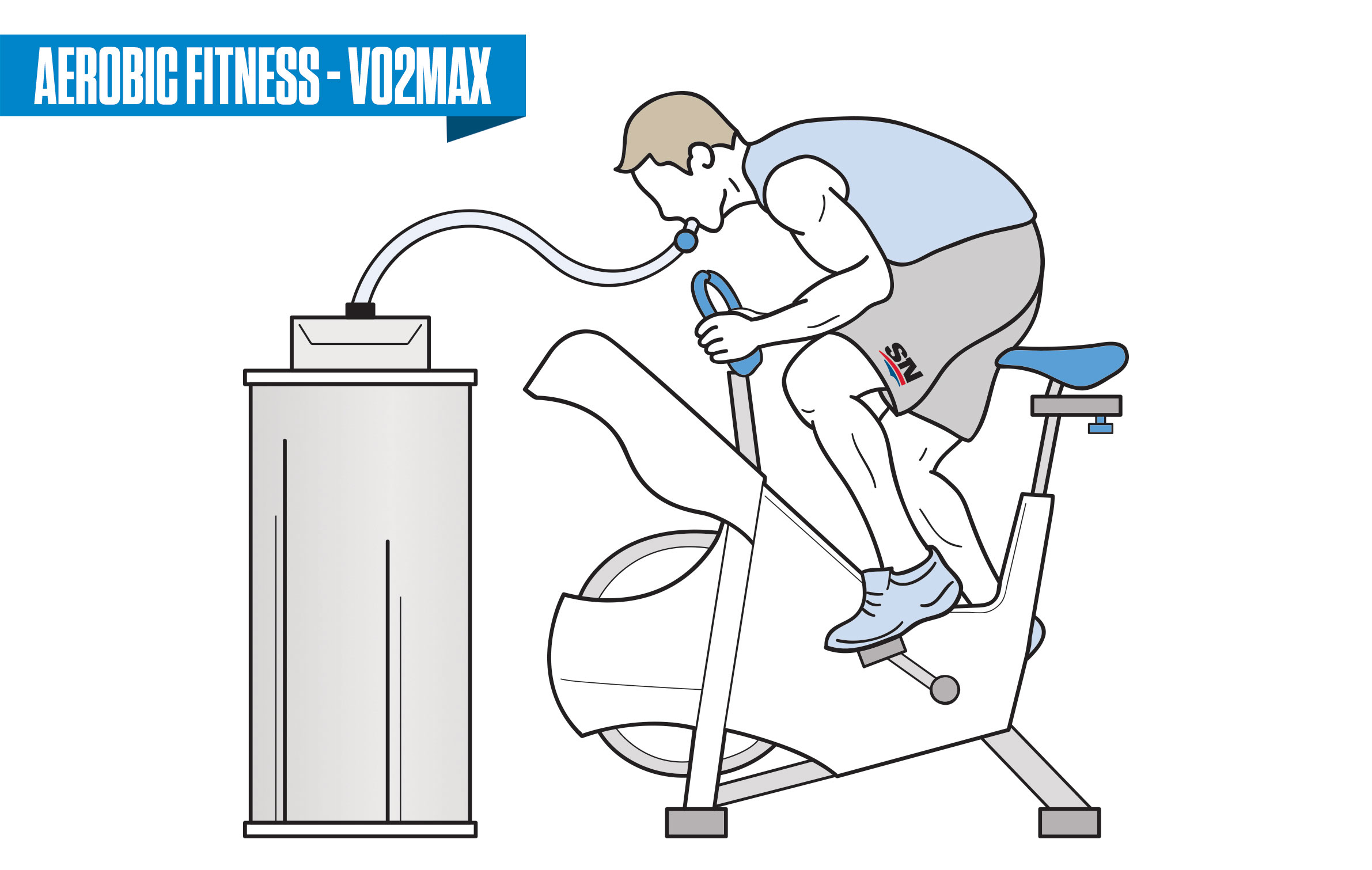
The athletes’ aerobic fitness — that is, the capacity of their cardiovascular and respiratory systems to supply oxygen to their muscles — is assessed by measuring “the amount of oxygen utilized during maximal exercise employing volume determination and analysis of expired air.”
Test Duration

VO2 Max (ml/kg/min)
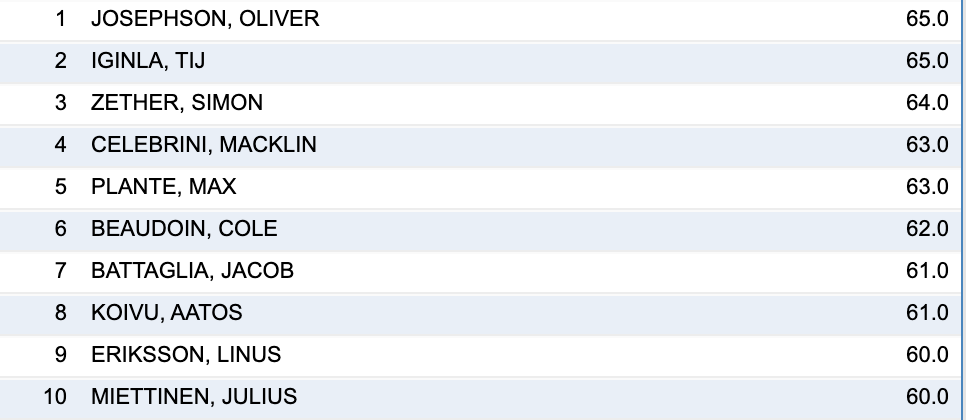
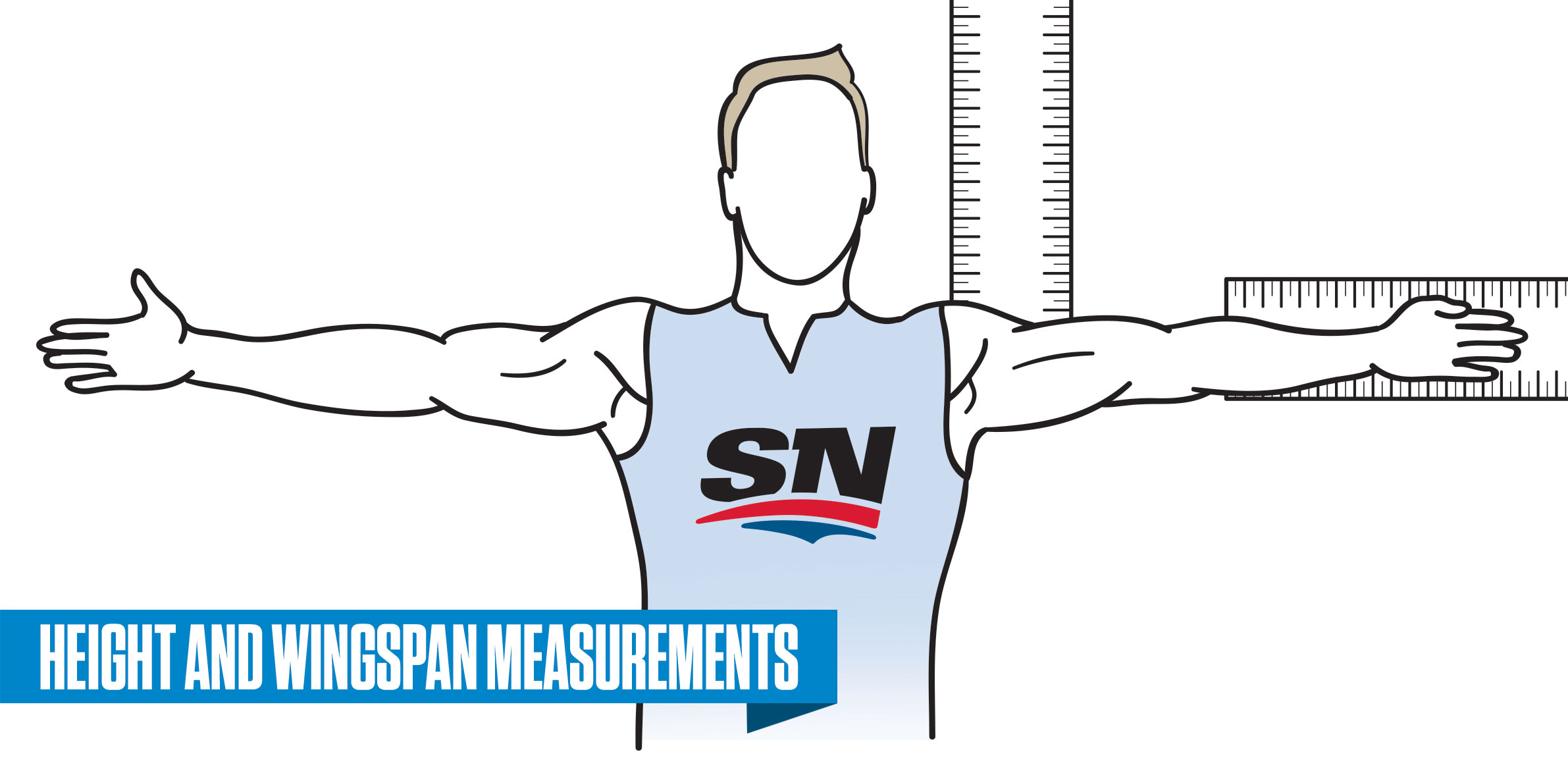
Standing Height: Athlete stands against a wall (barefoot, heels together with the backs of the feet touching the wall) and their height is measured to the nearest quarter inch.
Wingspan: Athlete extends his arms straight out to the sides. Wingspan is measured to the nearest quarter inch from the middle finger tip to middle finger tip.
Wingspan (Inches)
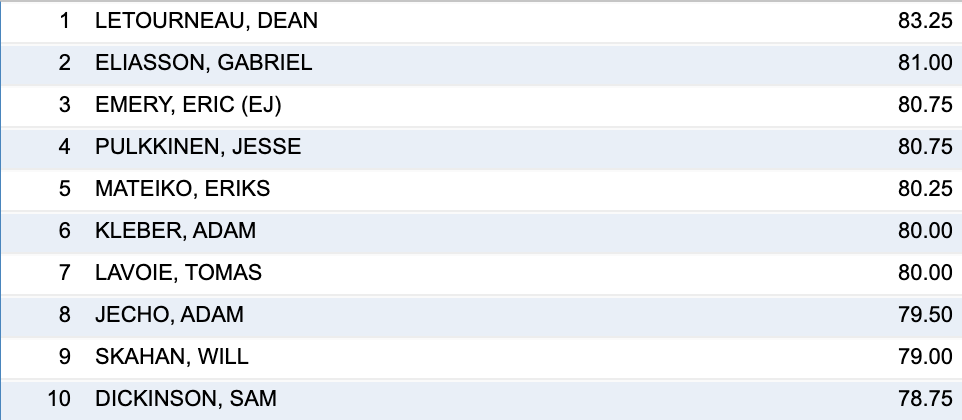
Body Composition by Percentage of Body Fat

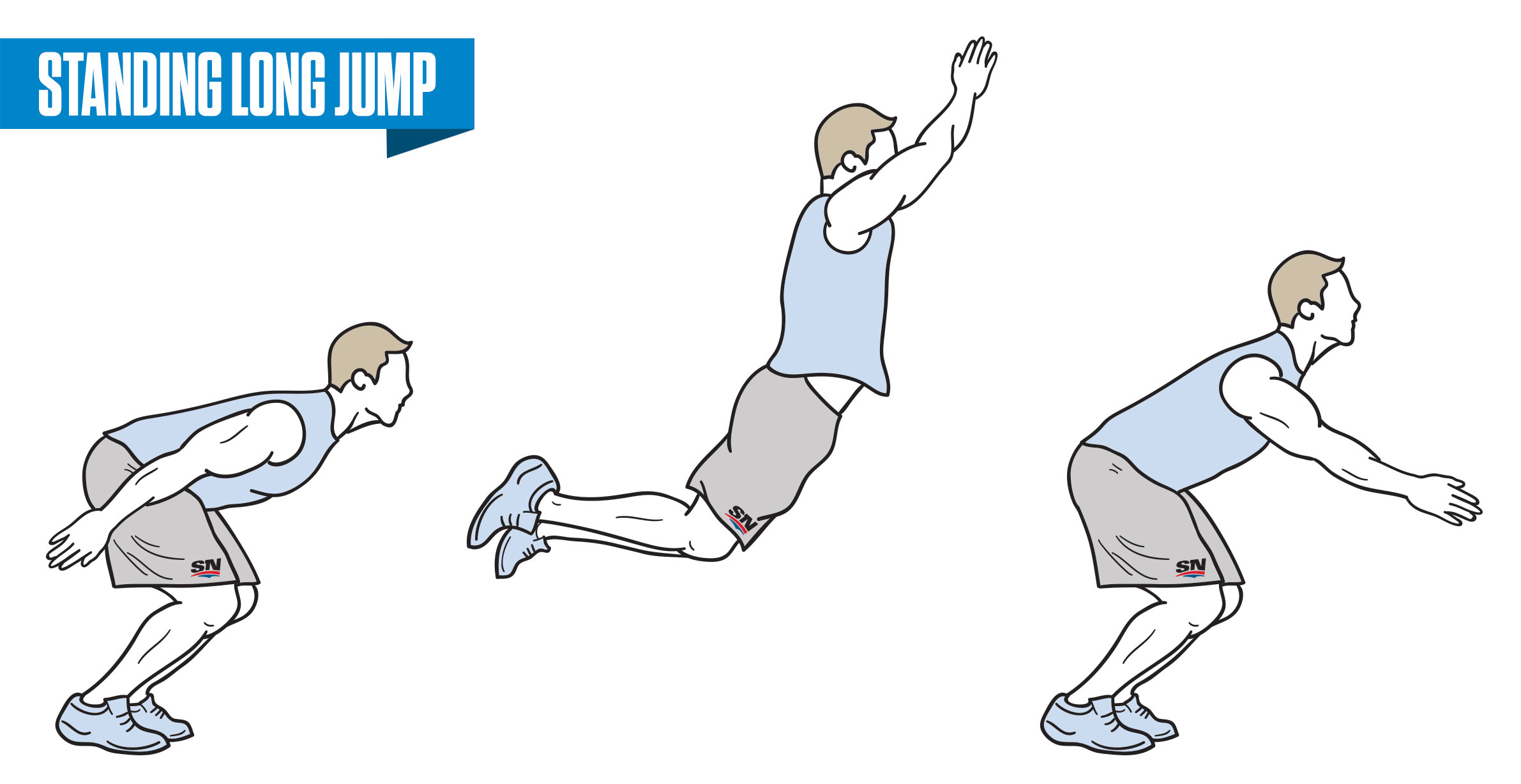
Standing Long Jump: Athlete stands with feet slightly apart with toes behind the jumping line. Using an arm swing to assist, the athlete jumps as far as possible.
Horizontal Jump (inches)

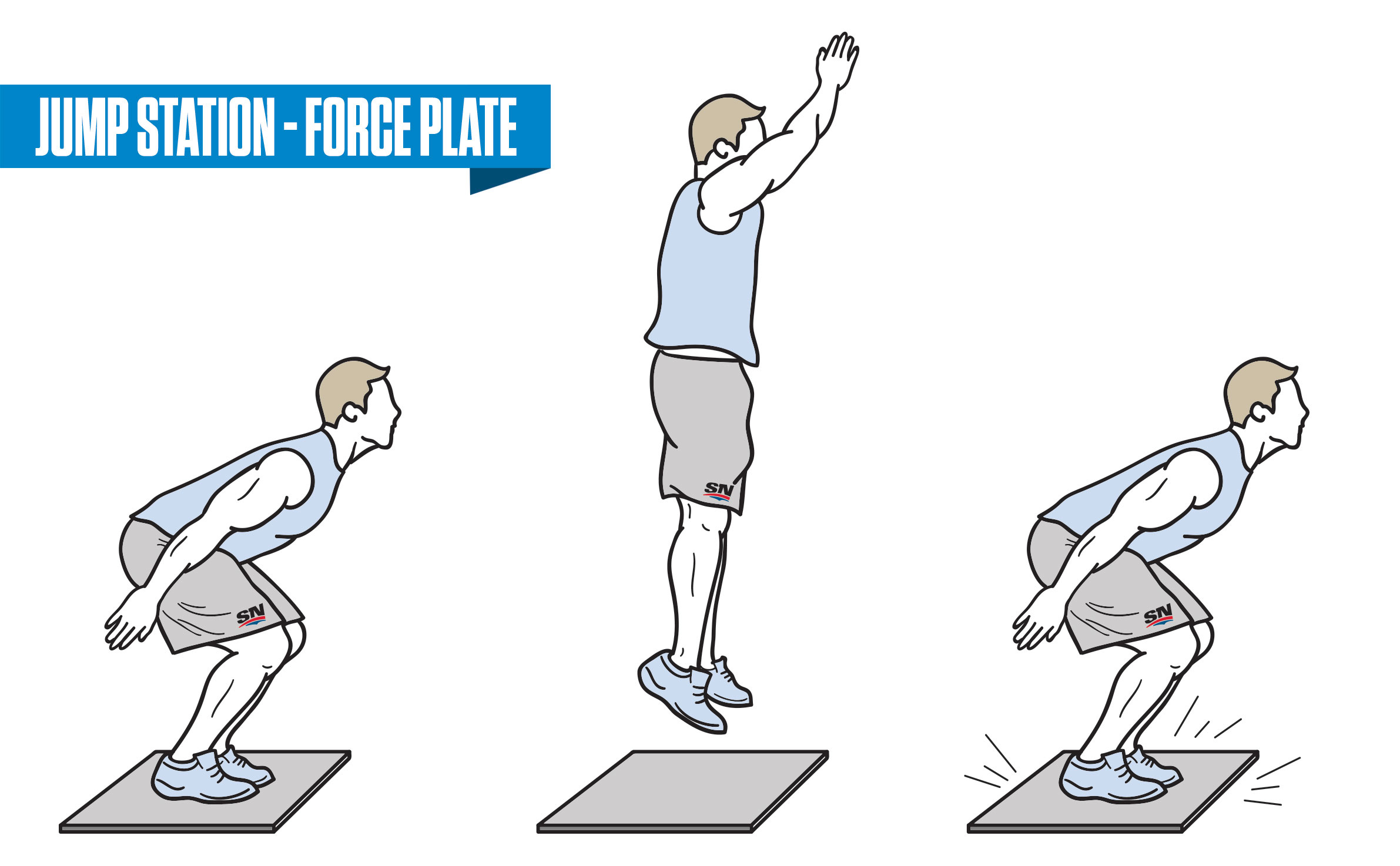
Jump Station (AccuPower Dual Force Plate System): An AccuPower Dual Force Plate system will be used to objectively measure the direction, strength and timing of the three-dimensional (3D) forces that the athlete produces during hockey-related movement. The AccuPower system also captures synchronized video data from two high-speed cameras and overlays the 3D force vector produced from each leg. The test will provide immediate feedback, allowing teams to assess movement efficiency, physical performance and injury potential.
Three jump types will be performed: Vertical Jump (with arm swing), No Arm Jump (no arm swing / hands on hips) and Squat Jump (squat start / hands on hips). Each jump test will include three maximum-effort vertical jumps separated by 10 seconds of rest. The athlete’s best vertical jump height from the three attempts of each jump will be recorded.
Vertical Jump (inches)

No Arm Jump (inches)
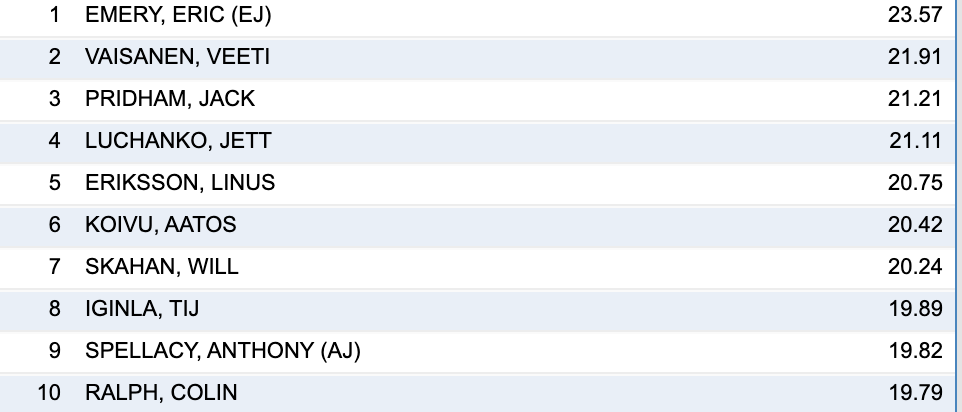
Squat Jump (Inches)

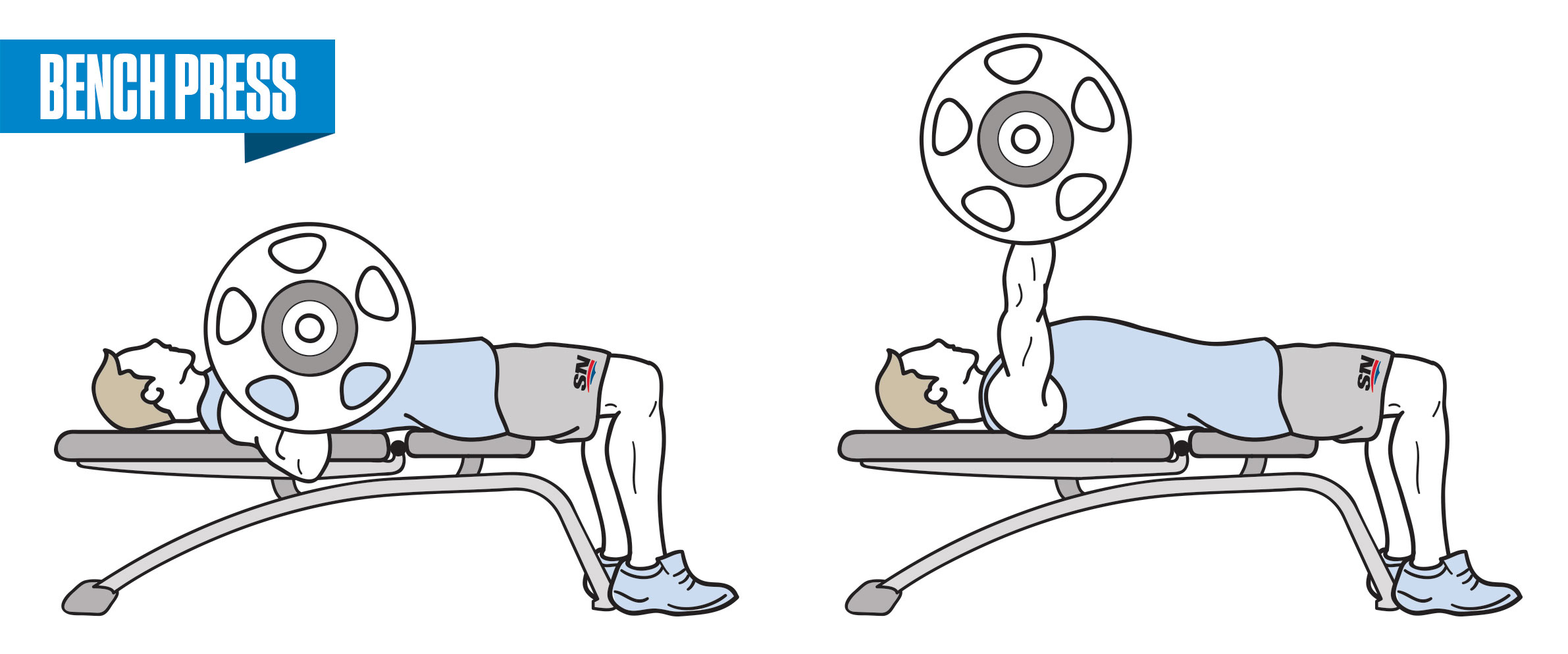
Using a standard padded bench press, the athletes lift 50 per cent of their body weight, laying on their back and gripping the barbell with thumbs roughly shoulder-width apart. The starting position is with arms fully extended — the bar is then lowered to the chest, and after a slight pause, the athlete will push the bar as quickly as possible until their arms are fully extended.
Each player will perform three reps at maximum velocity, with a pause between each rep. A device is also used to measure the velocity of the bar and the athlete’s ability to produce power.
50 per cent of Body Weight (Power – watts/kg)
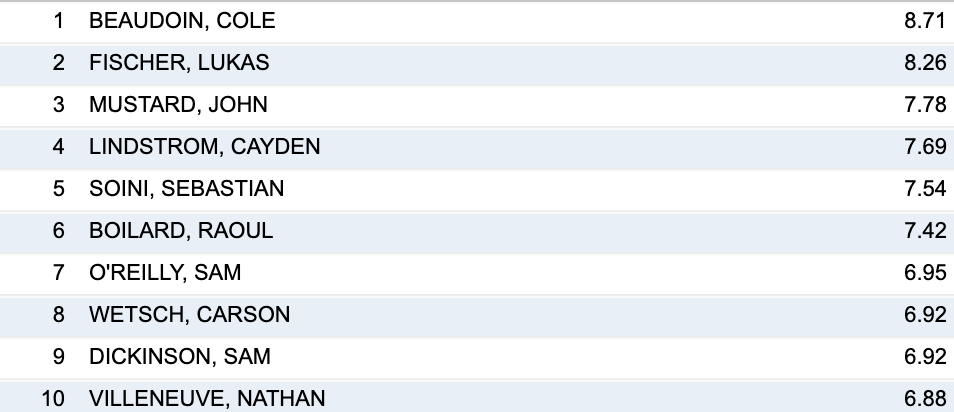
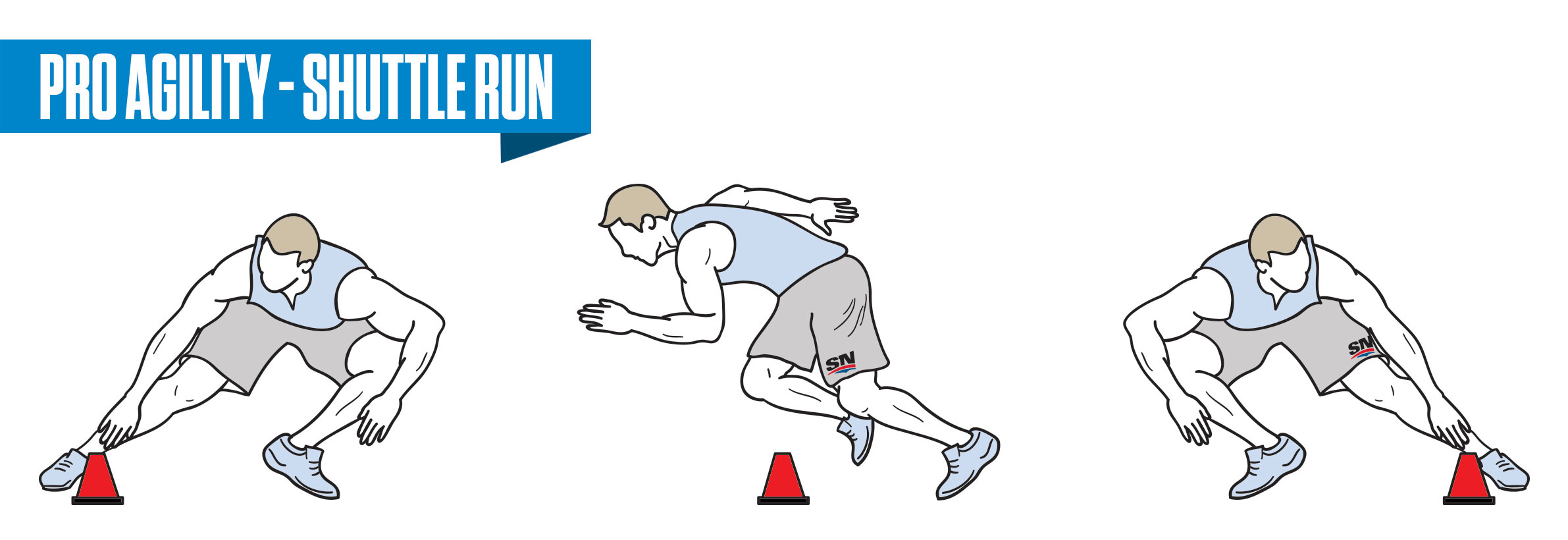
Pro Agility Test: The 5-10-5 yard shuttle (or 15-30-15 feet) evaluates multi-directional speed, agility and whole body reaction, plus control. Each player will perform one sequence starting to the right and one sequence starting to the left.
Pro Agility Left (sec)
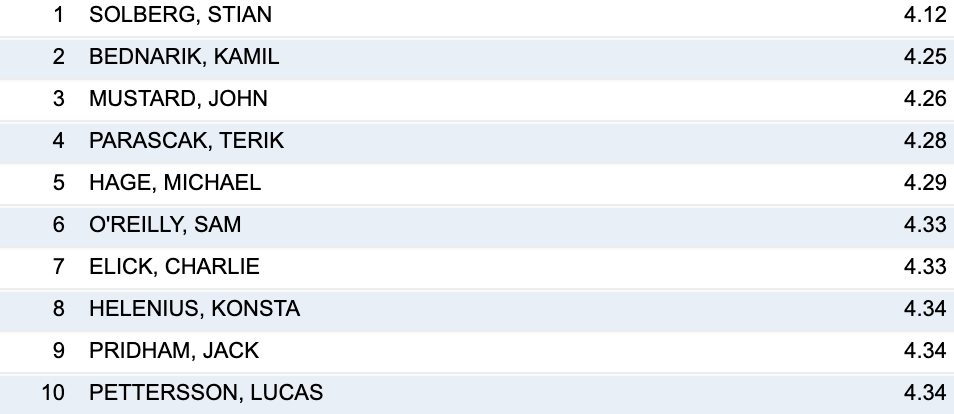
Pro Agility Right (sec)

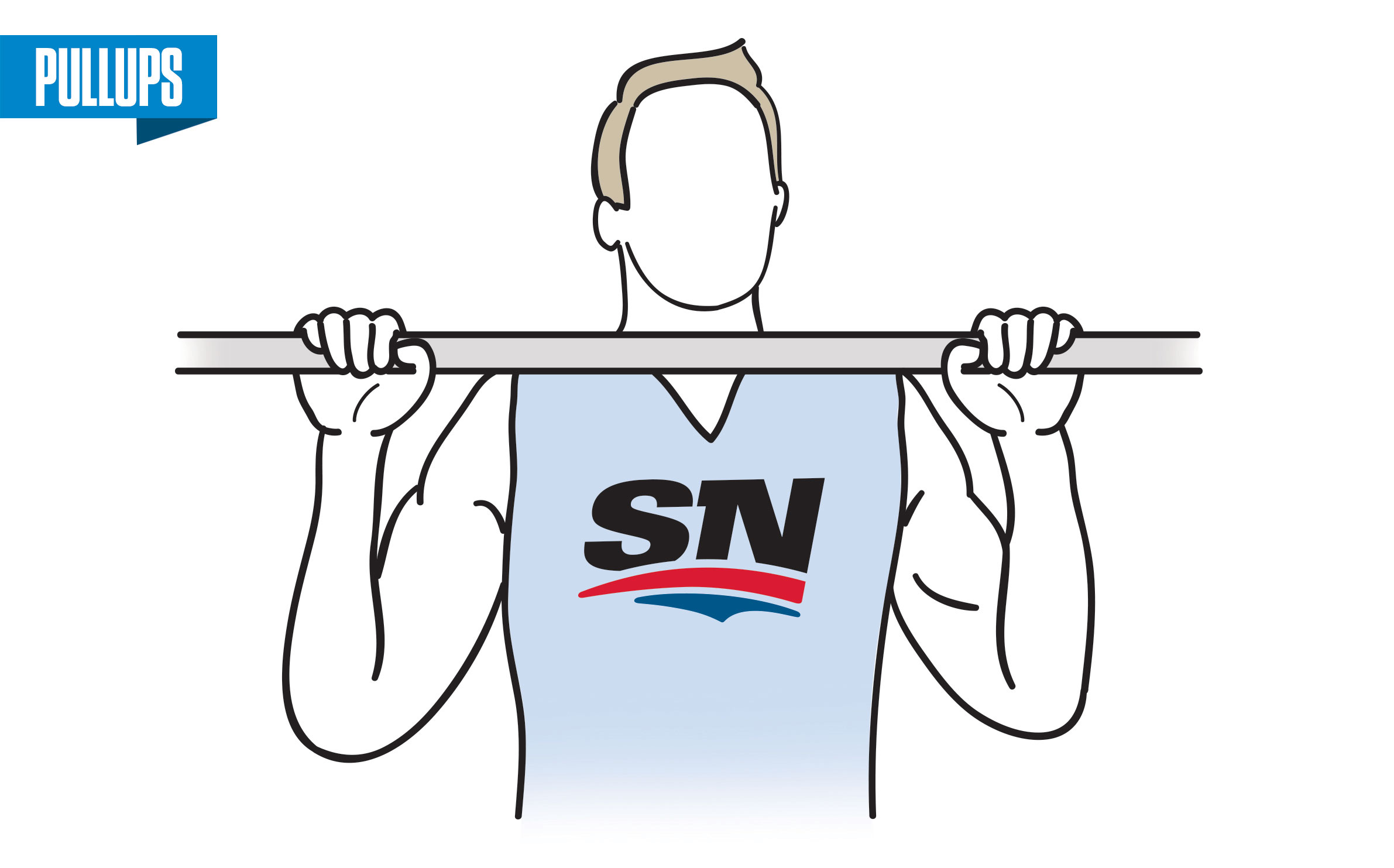
Pull-Ups: Athlete does as many consecutive pull-ups he can while maintaining the correct technique.
Pull-Ups Consecutive (max #)

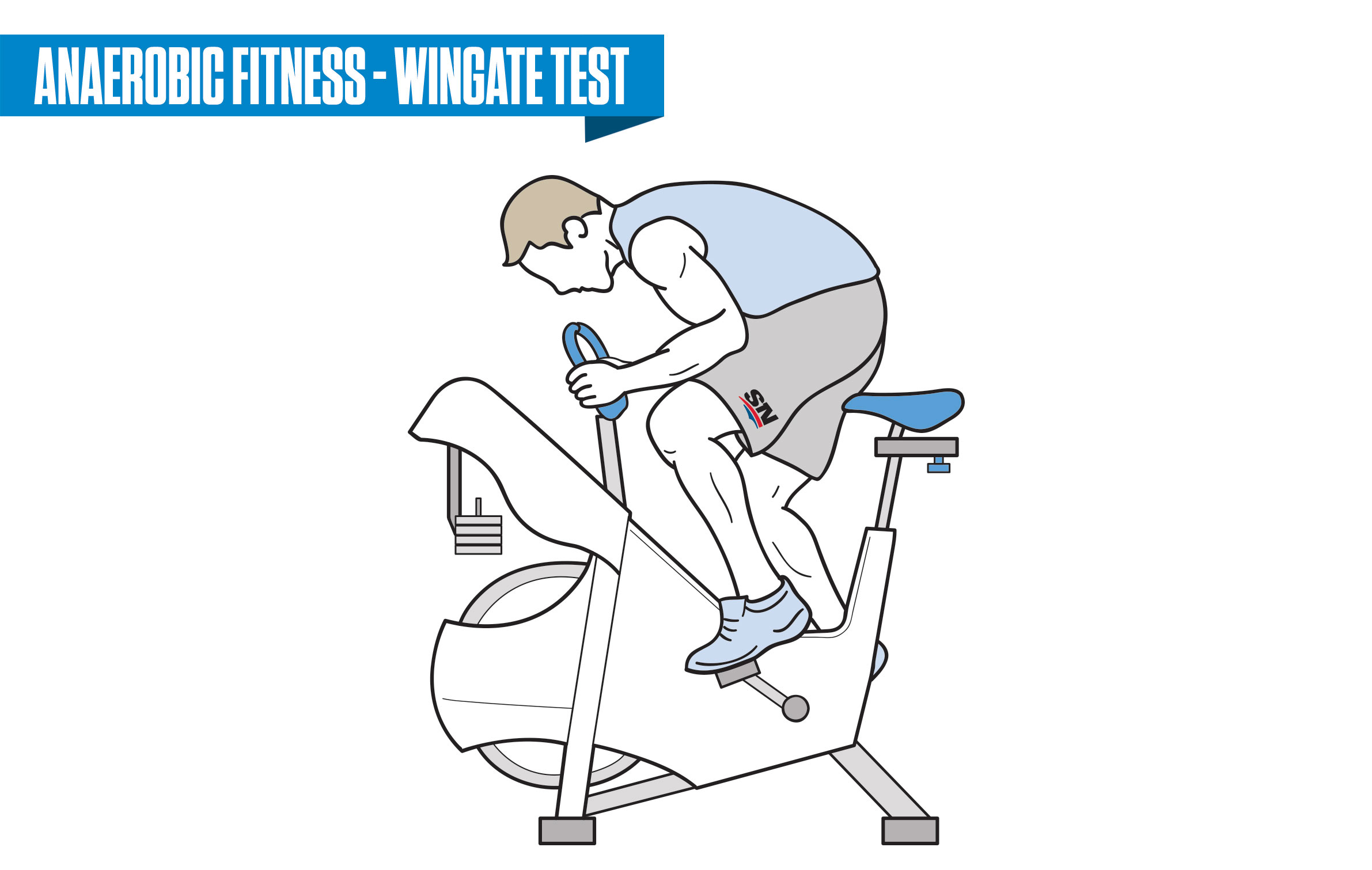
Wingate Cycle Ergometer Test: The athlete warms up by pedalling at a low resistance for two minutes. When given the start command, the player will perform the following intervals while seated.
Mean Power Output (watts/kg)
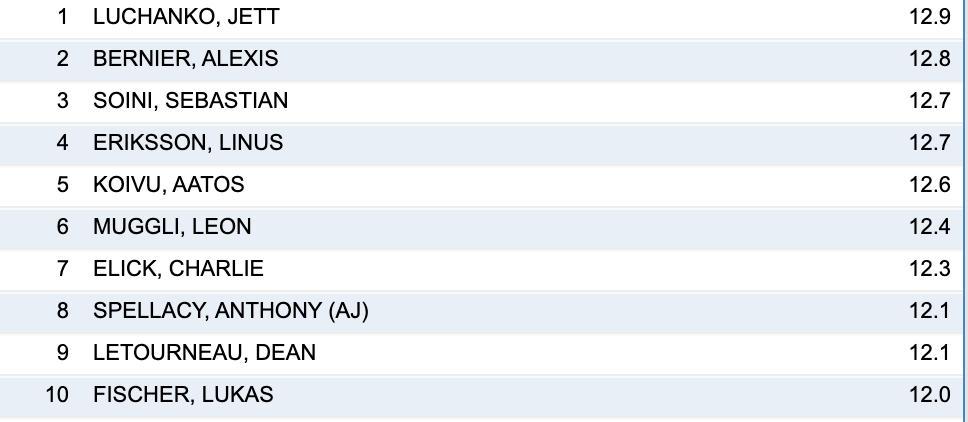
Graphics courtesy of Erika Vanderveer. Combine testing information courtesy of NHL Central Scouting.







COMMENTS
When submitting content, please abide by our submission guidelines, and avoid posting profanity, personal attacks or harassment. Should you violate our submissions guidelines, we reserve the right to remove your comments and block your account. Sportsnet reserves the right to close a story’s comment section at any time.